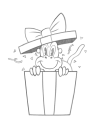Art of Caricature
Fundamental Skills(60 Lessons )
Build Your Caricature Muscles(71 Lessons )
Checklist
Memory Sketching
Caricature of a Caricature
Opposition Sketching
Spirit Animal
Digital Paint Sketching
Studying the Masters
Shape Design and Facial Features
Conclusion
Bonus Content
Give a gift
Give a gift card for art students to use on anything in the Proko store.
Or gift this course:

About instructor
Freelance commercial illustrator and caricature entertainer. He’s done a lot of editorial and product illustration and concept work for film and TV.









